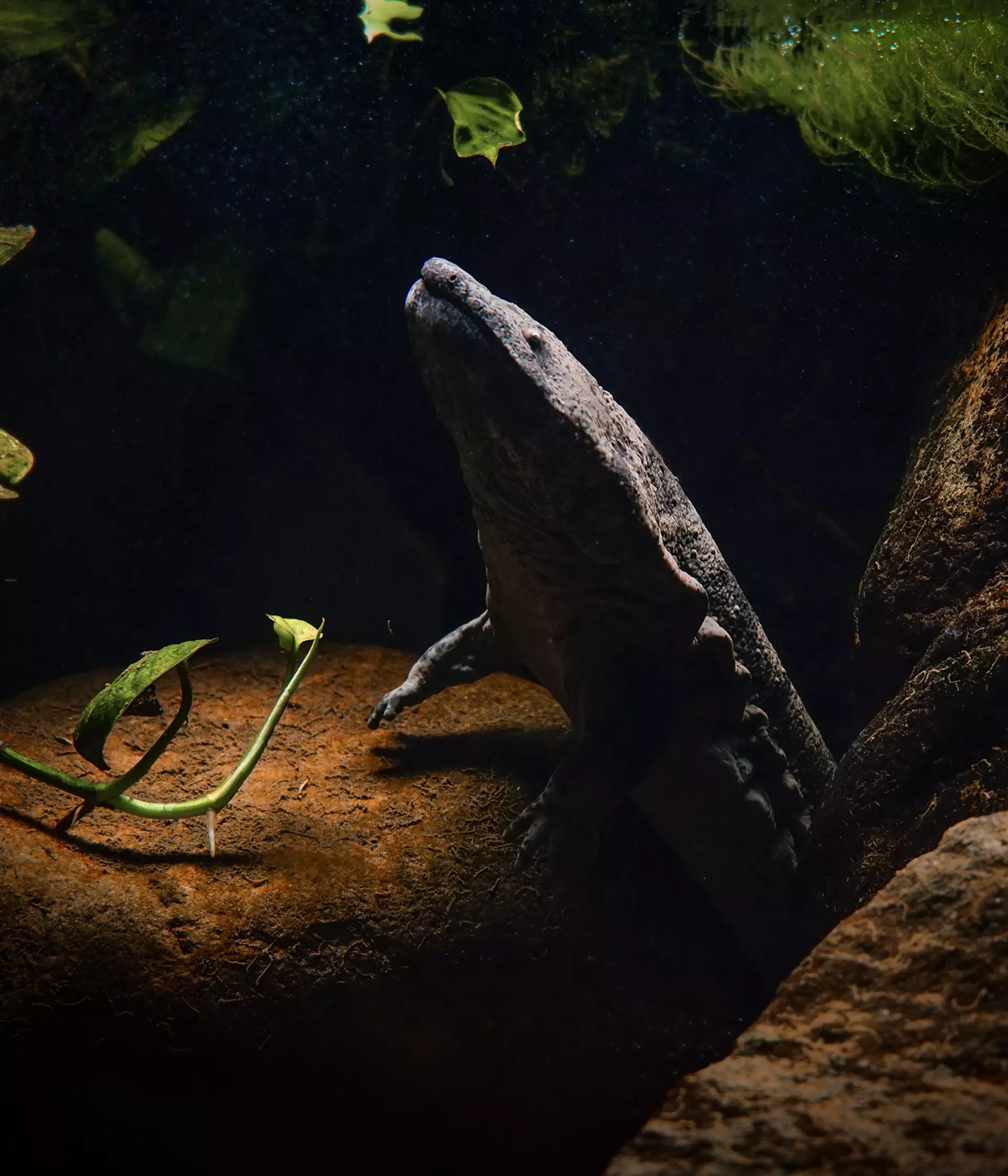At London Zoo our conservation work isn’t only about breeding programmes or reintroductions. Our efforts include providing sanctuary for species discovered being smuggled around the world as part of the illegal wildlife trade.
In 2019 we took in a rare Chinese giant salamander that was being smuggled across the border into the UK in a cereal box. Professor Lew, as he was subsequently named, had probably been destined for the pet trade.
Since 2000 we have provided a home for more than 3,370 animals confiscated by the UK’s border force, including Egyptian tortoises, red rain frogs, green tree pythons and hundreds of corals.
In fact the coral reef in Tiny Giants is grown entirely from coral rescued from smugglers and destined for private fish tanks or to be dried and turned into jewellery or curios.
Helping to stop smugglers
We don’t just provide a place for smuggled animals. We also provide crucial knowledge through our scientific research and animal expertise to help customs officials do their job as efficiently as they can.
For more than 10 years we’ve worked closely with the UK Border Agency CITES team at Heathrow to monitor the trade in marine organisms coming into the UK. It’s not always easy to identify species that are banned from trade from those that can be legally brought into the country with the appropriate paperwork. We’ve trained border agency staff in basic coral taxonomy so they have a better chance of intercepting species being imported illegally.
Since then we have received thousands of animals confiscated under the regulations and assisted the authorities with the identification of thousands more shipments.
Our collaboration with UK customs helps them to monitor and control the trade in wild collected marine animals and is an important part of the work that ZSL does to protect wild animals and their habitats from over-exploitation.
Together for wildlife globally at ZSL
Illegal wildlife trade in Mongolia
We have pioneered infrastructure to prevent the illegal wildlife trade across Mongolia, by establishing a new ecological police department and providing cutting-edge border control training.
Reducing demand to halt illegal wildlife trade
The illegal wildlife trade is an enormous global problem. 100 million sharks are killed every year, mostly for their fins. 20,000 African elephants are slaughtered annually for their ivory. More than 1,000 rhinos are poached every year from South Africa alone.
We encourage our zoo visitors to take positive steps to reduce the demand that drives the illegal wildlife trade. This includes being a savvy tourist, buying sustainably sourced products, avoiding exotic delicacies on holiday, and choosing the right pet.
Conservation at ZSL
Developing a route for recovery for Chinese giant salamanders
Together with our partners, we completed the largest ever wildlife survey in Chinese conservation history, and discovered just 24 giant salamanders, all of which were likely escapees from farms.
Saving pangolins from extinction
Pangolins are the most illegally trafficked mammals in the world, and some species are on the brink of extinction.
Greater one-horned rhino conservation
Together with local communities and our partners, we have established anti-poaching patrols which are key to recovering numbers in Nepal.
